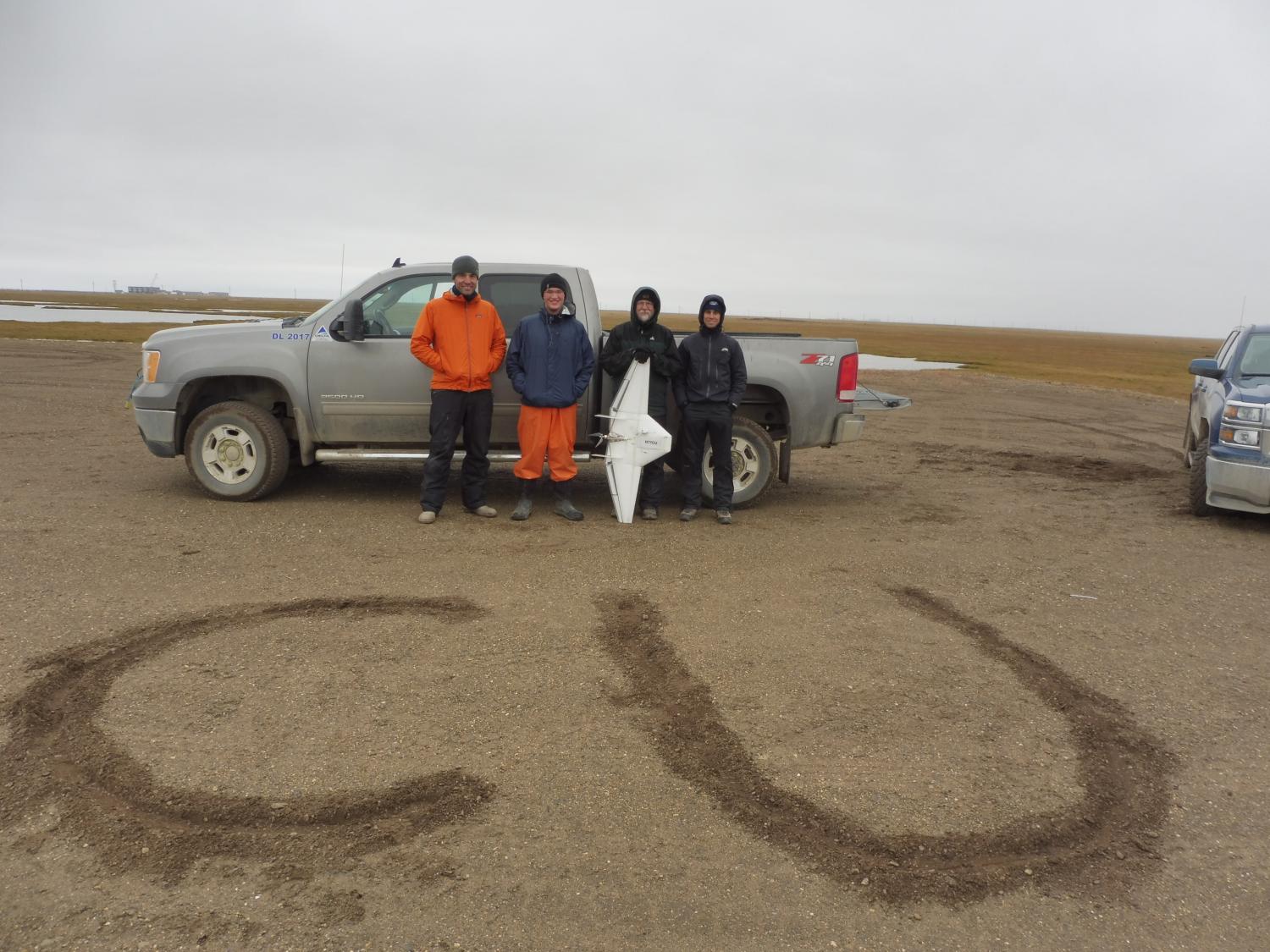That's All, Folks!

With a final automated flight in the fog and a series of low level box patterns over the beach on Saturday, we concluded the summer ERASMUS deployment to Oliktok Point, Alaska. With over 150 aircraft launches, 50+ profiling flights, including 23 individual profiles in a single 12 hour block, 23 hours of flight time, and nearly 350 individual ground station starts, it was a very busy and flight intensive campaign. The vast quantities of data collected will go on to further knowledge of weather patterns in the arctic and how they effect weather all over the Earth. The experiences with the aircraft itself will drive improvements of both the airframe and flight controller, further increasing the usefulness of the DataHawk2 as a research platform.
The past two weeks made up a great deployment. From solving engineering problems to collecting valuable atmospheric data, this campaign has embodied what RECUV does best: using engineering strategies to design and integrate unmanned vehicle systems to accomplish relevant research in new and innovative ways. It's been great working with people not only from the CU Aerospace Sciences department, but also from CIRES, ARM, Fairweather, ARCTEC Alaska, The Pacific Northwest National Laboratory, as well as Sandia National Laboratories. Thank you to the Oliktok LRRS station technician Lynn Nelson, station chief Carter Boyd and the United States Air Force for making our stay comfortable and productive. Also a big thank you to Wessley King, the AMF-3 operator, for providing workspace and transportation as well as his time for our use. Finally, thank you to Al Bendure who provided assistance in innumerable forms including coordinating with the FAA, ConocoPhillips, BP, ENI, PNNL, and SNL as well as spending many cold, windy, and foggy hours perched in the back of the pickup truck on bear lookout. This deployment couldn't have happended without them, and to them we are grateful.
This concludes the field notes for the summer ERASMUS deployment. Expect further ERASMUS updates as the Spring 2016 deployment draws nearer.
Nate pilots the DataHawk low over the beach
Gijs and Al set up the ground station antenna
After the final flight! Thanks for tuning in! Spring 2016 is coming up!

